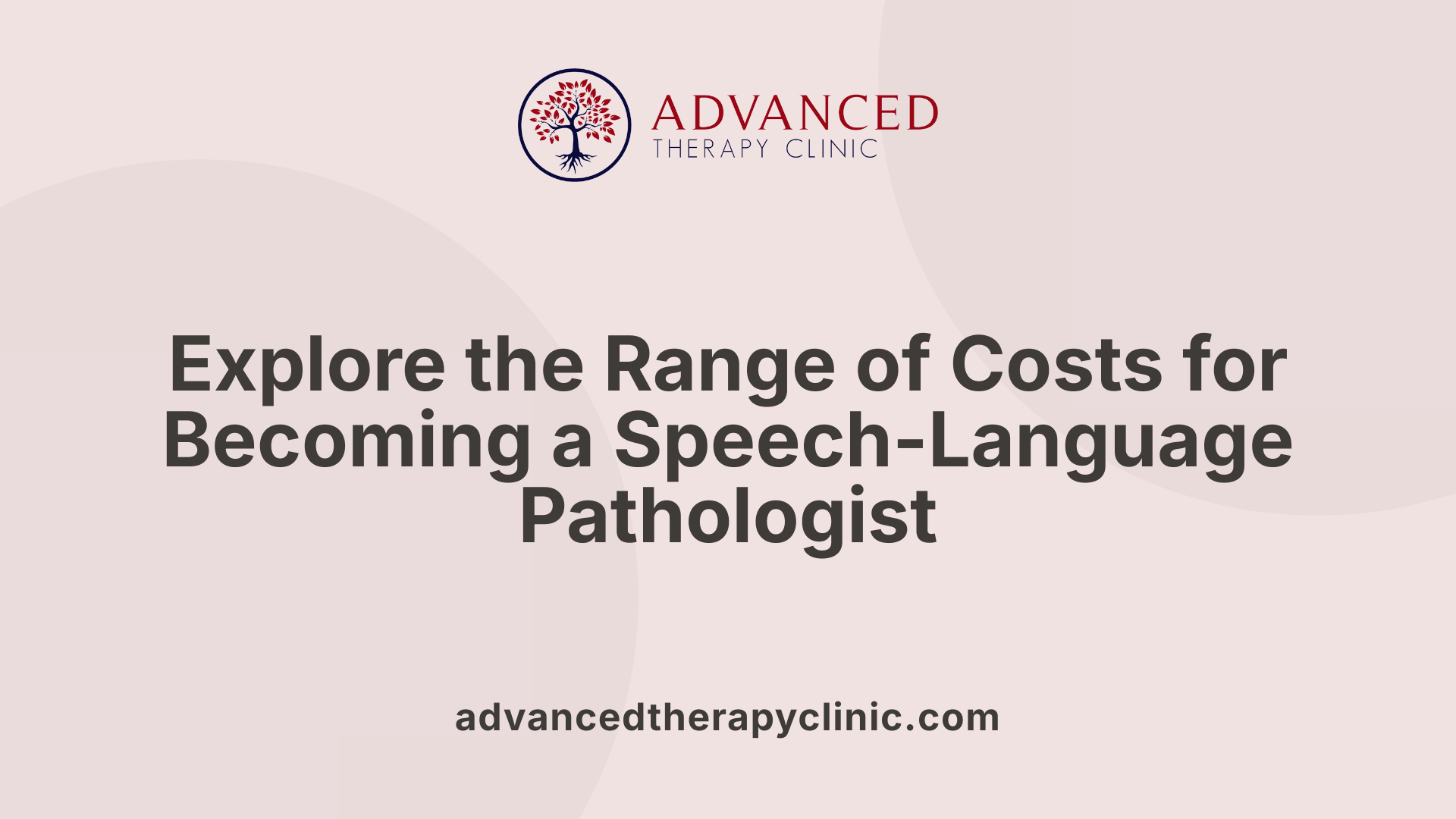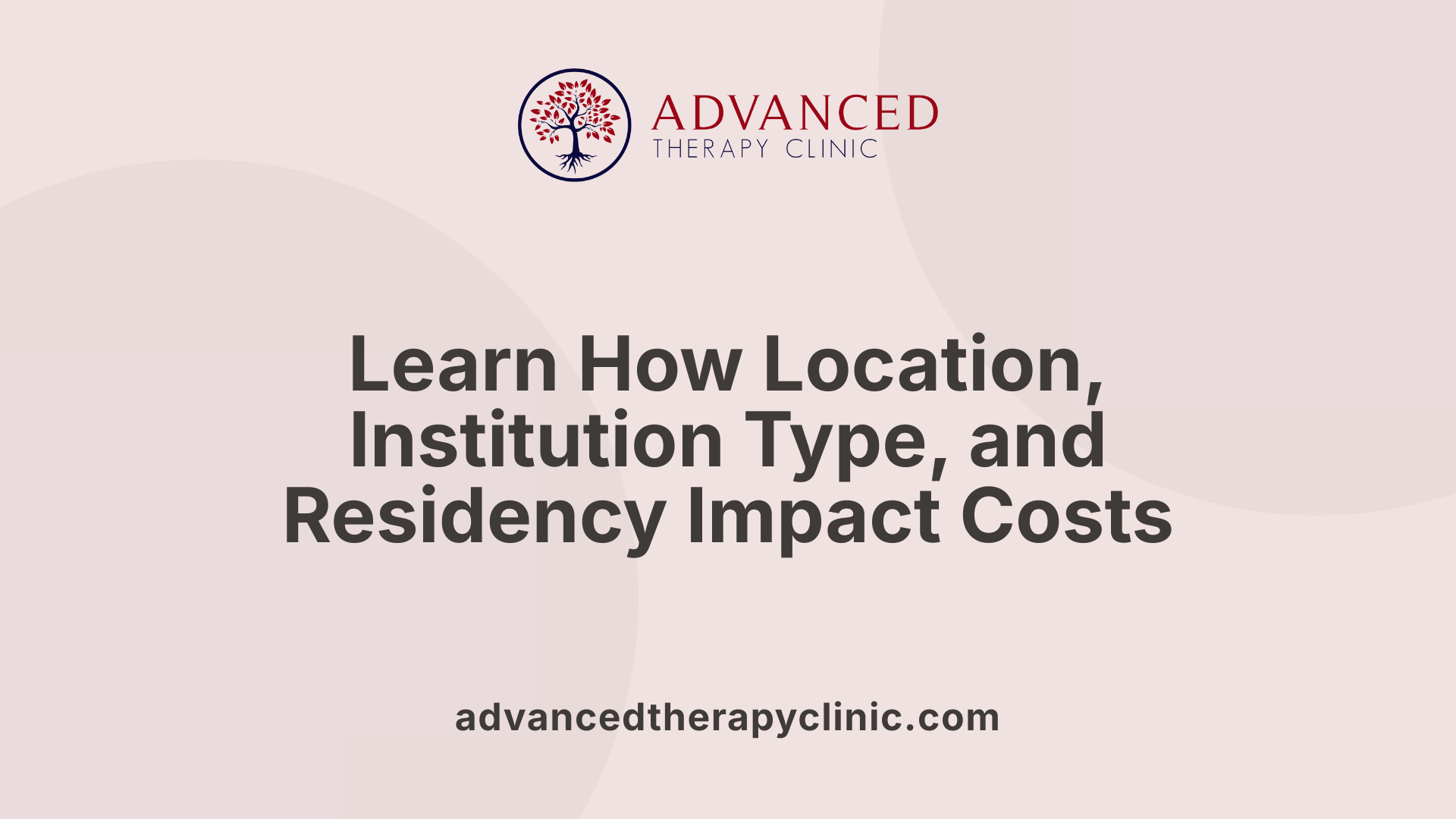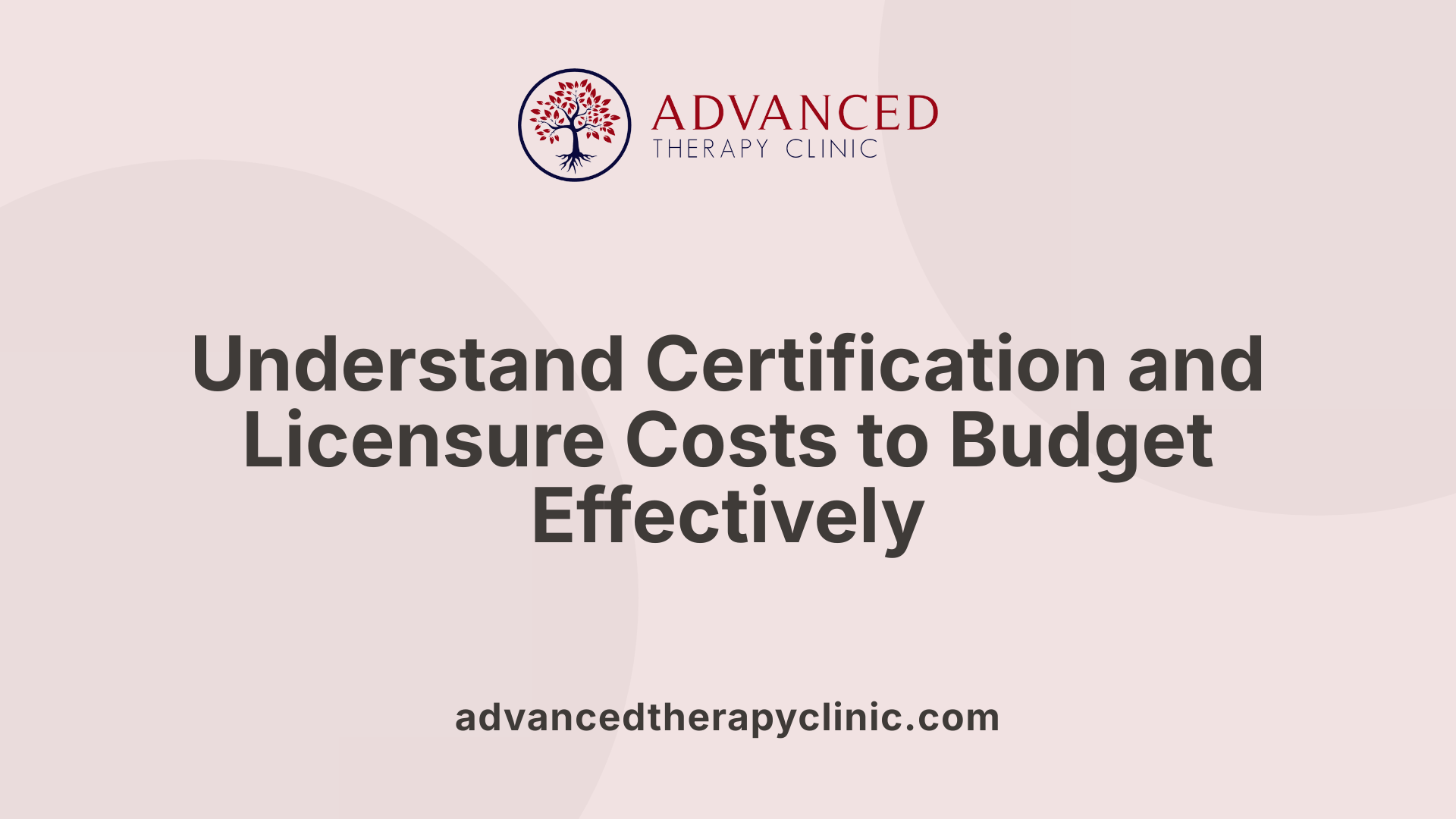How Much Does It Cost to Become a Speech Pathologist


Understanding the Costs Involved in Becoming a Speech Pathologist
Embarking on a career as a speech-language pathologist (SLP) involves a significant financial investment, encompassing education, certification, licensing, and related expenses. This comprehensive guide explores the typical costs, duration, influencing factors, and financial aid options available, providing a clear picture of the monetary commitment required for aspiring professionals in this rewarding field.
Educational Costs and Program Variability

What are the typical costs involved in becoming a speech-language pathologist, including education, certification, and related expenses?
Pursuing a career as a speech-language pathologist involves a substantial financial investment. The journey begins with graduate education, generally in the form of a master's degree in speech-language pathology. Tuition costs can vary widely depending on the institution and whether the program is on-campus or online.
For example, tuition per credit hour can range from approximately $286 to over $800. Most programs require between 60 and 76 credits to graduate. In total, students might pay anywhere from around $23,000 to $75,000 for tuition alone. Additional mandatory fees, such as registration, departmental, and technology fees, can add another $840 per semester in some cases.
Beyond tuition and fees, students should consider costs for textbooks, clinical supplies, immunizations, background checks, and licensing exams. Certification application fees, such as the $490 fee for the American Speech-Language-Hearing Association (ASHA), are also part of the expenses.
Financial aid options, including federal loans, scholarships, and assistantships, can help reduce the burden. However, prospective students need to budget for living expenses, transportation, and other personal costs, which can significantly increase the total investment.
Overall, the complete cost of becoming a licensed speech-language pathologist can range from approximately $25,000 at low-cost institutions to over $125,000 at private universities, especially when considering living expenses. Planning ahead and exploring financial aid opportunities are crucial for managing these costs.
| Cost Component | Typical Range | Additional Details |
|---|---|---|
| Tuition per Credit | $286 - $800+ | Varies by institution |
| Total Credits Needed | 60-76 | Depending on program |
| Tuition Total | $23,000 - $75,000 | Based on institution |
| Semester Fees | Approx. $840 | Per semester, varies |
| Certification Fee | $490 | ASHA application |
| Living Expenses | Varies | Housing, food, transportation |
| Total Investment | $25,000 - $125,000 | Overall costs including all factors |
Understanding these costs helps prospective students plan financially for a career in speech-language pathology and highlights the importance of exploring aid options early.
Cost Range and Influencing Factors
 The cost of becoming a speech-language pathologist varies widely depending on multiple aspects of the educational pathway. One of the primary factors is the geographic location of the institution. Schools situated in urban, high-cost regions tend to have higher tuition and fee structures compared to those in rural or less expensive areas.
The cost of becoming a speech-language pathologist varies widely depending on multiple aspects of the educational pathway. One of the primary factors is the geographic location of the institution. Schools situated in urban, high-cost regions tend to have higher tuition and fee structures compared to those in rural or less expensive areas.
Institution type also significantly impacts overall expenses. Public universities generally offer lower tuition rates, especially for in-state residents, whereas private universities tend to charge more, sometimes reaching upwards of $90,000 or more for the entire program.
Residency status plays a crucial role in tuition costs. In-state students often pay substantially less—examples show in-state fees around $8,500 per semester at some universities—compared to out-of-state students, who might pay over $11,700 per semester. These differences can lead to an increase of several thousand dollars over the course of the program.
The length and format of the program are additional costs determinants. Full-time master's programs typically span two years, with costs accumulating accordingly. However, part-time or extended options, such as online learning that can extend up to four years, may increase overall expenses due to additional semesters of tuition and related fees.
Other influences include extra costs for licensing exams, certification fees, supplies, books, and clinical training requirements. Students pursuing advanced certifications or specialization fields often face extra coursework fees but can benefit from higher earning potential post-graduation.
Below is a summary of how various factors influence costs:
| Factor | Typical Impact | Example Details |
|---|---|---|
| Geographic location | Higher in urban areas | Urban institutions may charge more for tuition and services |
| Institution type | Private schools are costlier | Private institutions often cost between $50,000-$90,000+ |
| Residency status | In-state saves money | In-state fees around $8,500 per semester; out-of-state $11,700+ |
| Program duration | Longer programs cost more | Extending from 2 to 4 years increases total tuition costs |
| Additional fees | Vary based on program | Licensing, certification exams, textbooks, and clinical fees |
To explore further, prospective students should consider examining "Factors Influencing Cost of Speech Therapy Education," which covers state-specific variations, scholarship options, and program-specific fees. Understanding these factors can help in planning financially for a successful career in speech-language pathology.
Certification, Licensure, and Recurring Expenses

What are the certification and licensure costs for speech-language pathologists?
Obtaining and maintaining certification as a speech-language pathologist involves several expenses. The initial certification application fee for the American Speech-Language-Hearing Association (ASHA) ranges from $240 to $490, depending on eligibility and membership status. For members of the National Student Speech-Language-Hearing Association (NSSLHA) with two years of continuous membership at graduation, this fee is reduced to $240. Non-members pay the full amount, while dual certification applications incur an additional $256 fee.
Renewal of certification requires paying an annual dues, which are currently $250 for certified members and $221 for non-members. These dues must be paid each year by December 31. In addition to dues, renewal also involves completing continuing education hours—20 hours every two years, including 3 hours of child abuse training.
State licensure costs are separate from ASHA certification. The initial licensure application fee generally is around $50, with renewal costs about $65 annually. Licensure requirements typically include proof of a master's degree, clinical experience, and passing the Praxis exam.
Overall, professionals should anticipate recurring expenses for certification renewals, licensure fees, and ongoing education. When combined, these can amount to roughly $256 to over $511 annually, depending on membership status, certification level, and additional certifications or memberships.
Maintaining these credentials requires careful budget planning to cover both mandatory fees and the cost of staying current through professional development activities.
For more detailed information, search: "Cost of Speech-Language Pathologist Certification and Licensure".
Total Investment and Timeline to Practice
Pursuing a career as a licensed speech-language pathologist entails a significant financial commitment and a structured educational journey. The total costs include education expenses, certification, licensure fees, and living expenses.
Starting with the educational investment, attending a Master of Science in Speech-Language Pathology program at Vanderbilt University for the 2025-2026 academic year, for instance, could cost approximately $95,072 in Year 1 and $93,972 in Year 2, with some costs reduced for shorter enrollment periods. Tuition alone amounts to roughly $48,720 annually, or $32,480 for a nine-month academic term. Additional expenses such as books, supplies, housing, transportation, and personal care can elevate the total investment.
Beyond education, students must budget for certification and licensure. The American Speech-Language-Hearing Association (ASHA) charges an initial certification application fee of $490 (or less if eligible for discounts), followed by annual renewal dues of $250 for members or $221 for non-members. Licensure requirements also involve exam fees ($115) and possibly state-specific fees.
When factoring in living costs, which vary by location, the total expenditure over the educational and certification pathway can range from approximately $50,000 to over $100,000.
Estimated Timeline from Undergraduate to Licensed Practitioner The journey to becoming a licensed speech-language pathologist typically spans six to nine years. It begins with a 3-4 year undergraduate degree in a relevant field, followed by a 2-3 year master's program. During or immediately after this, students complete a clinical fellowship lasting roughly 9 months.
Key Steps in the Pathway
- Complete a bachelor's degree (3-4 years)
- Graduate from an accredited master's program in speech-language pathology (2-3 years)
- Pass the Praxis Examination and meet clinical fellowship requirements
- Apply for state licensure
- Obtain the ASHA Certificate of Clinical Competence (CCC)
The process combines academic coursework, supervised clinical experience, certification testing, and licensure, culminating in readiness to practice professionally.
Additional costs and the duration may vary based on program choices, part-time versus full-time study, and state requirements. Prospective students are encouraged to research specific programs and financial aid options to optimize their journey toward becoming successful speech-language pathologists.
Planning for the Financial Commitment
Aspiring speech-language pathologists should carefully consider the substantial costs associated with education, certification, and licensure. Exploring financial aid opportunities, scholarships, and planning for living expenses can mitigate some of the financial burdens. Ultimately, the investment in this health sciences career can lead to a rewarding salary, high job demand, and meaningful professional fulfillment, making the initial financial outlay a worthwhile investment in one's future.
References
- Master of Science Speech-Language Pathology (MS-SLP) Cost of ...
- Master of Science in Speech-Language Pathology
- Certification Standards for SLP: Dues and Fees - ASHA
- 10 Most Affordable Online Masters in Speech Pathology for 2025
- Costs & Aid | UW Speech-Language Pathology Master's Degree
- Is a Master's Degree in Speech-Language Pathology Worth It?
- Apply for Certification in Speech-Language Pathology - ASHA
- MA-SLP Program Costs and Funding
Recent articles

How Do You Help a 2 Year Old with Autism
Early Steps: Supporting Toddlers with Autism for Lifelong Growth

The Benefits of ABA Therapy for Children with Autism
Unlocking Potential: How ABA Therapy Transforms Lives of Children with Autism

Do Autistic People Get Married?
Exploring Love and Marriage in the Autism Community

Apraxia of Speech
Unlocking the Mysteries of Apraxia of Speech: Challenges and Therapeutic Innovations

Creating an IEP for a Child with Autism
Navigating the IEP Journey for Children with Autism

What Are Some Engaging Speech Therapy Games?
Unlocking Communication: The Power of Play in Speech Therapy


